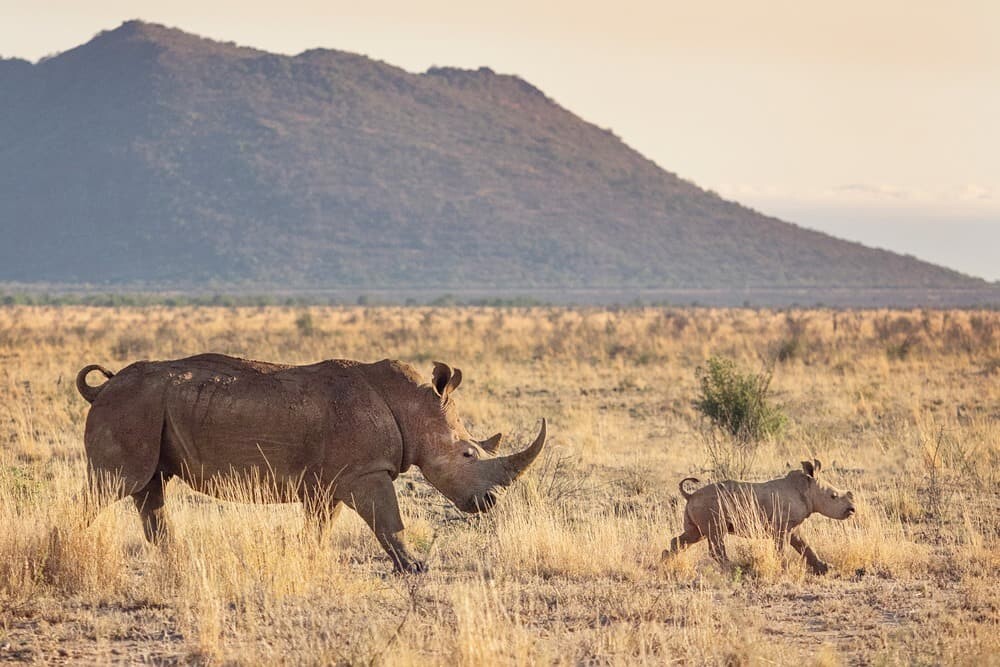
Conservation Efforts in South Africa – Kapama Private Game Reserve
*Please note – The photos within this article may be distressing for some but please know this is a method of conservation and everything is done to ensure the safety and well being of the rhino not only during the notching, but to protect it in the future and help stop the decline of the species.
September, 12th, 2019.
Dust clouds dispersed and speckled morning light shone through the acacia trees as a helicopter hovered above the white rhino we were aiming to tag.
It’s moments like this that humble you to the core. To witness a notching is an absolute privilege; one that’s emotional, a little confronting but so very inspiring to see the efforts being made to save such beautiful yet vulnerable creatures.
With rhino populations under constant threat of poaching and habitat loss, rhino notching has become a necessary method of conservation. Trained vets, volunteers and anti-poaching units are coming together to help save the rhino population that’s been threatened since 2002.
Just one rhino was killed in South Africa back in 2001 however that number rose to 1,349 in 2015 after the poaching crisis peaked, seeing rhinos killed solely for their horns. There was a staggering 9,000% rise in deaths between 2007 – 2014 according to savetherhino.org, a shocking statistic that came about due to greed and misinformation.
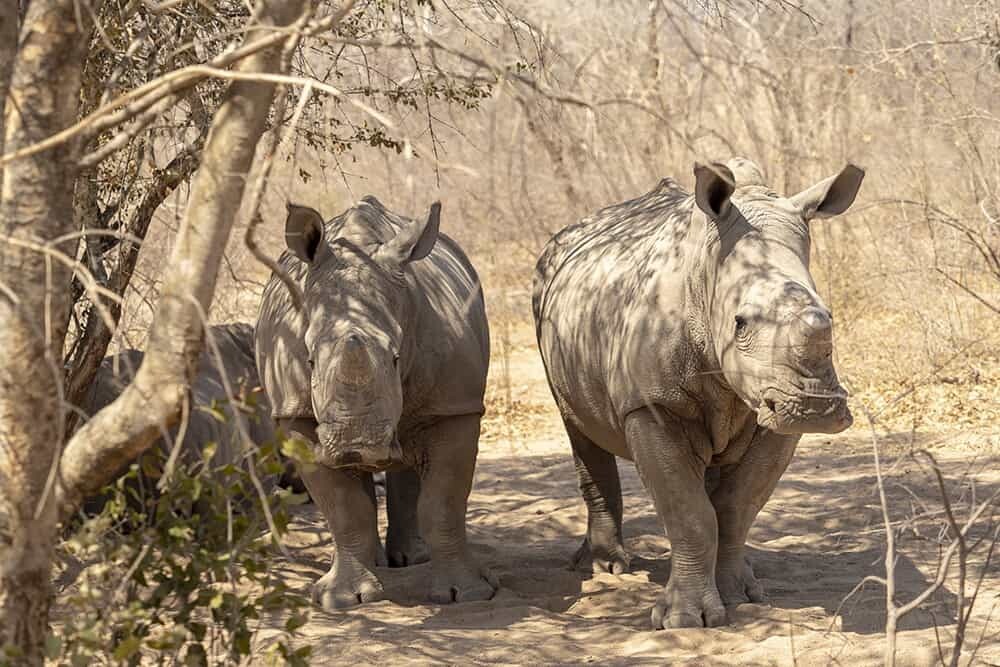
With South Africa home to almost 80% of the world’s rhino population, they’re at the forefront of poacher attacks but are also busy implementing methods to reduce the killings and remove rhinos from the endangered list. The number of programs, conservation initiatives and centres helping to monitor, rear or rehabilitate orphaned or injured rhinos is incredible.
There are five species of rhino globally, two exist in Africa, those being the black and white rhinos. The black rhino is listed as critically endangered with only 5,500 individuals believed to be left in existence. The white rhino is listed as near threatened with a population of around 18,000. While poaching figures have been declining recently in comparison to the earlier stages of the poaching epidemic, the threat continues, especially within Kruger National Park which stretches for 19,485 km².
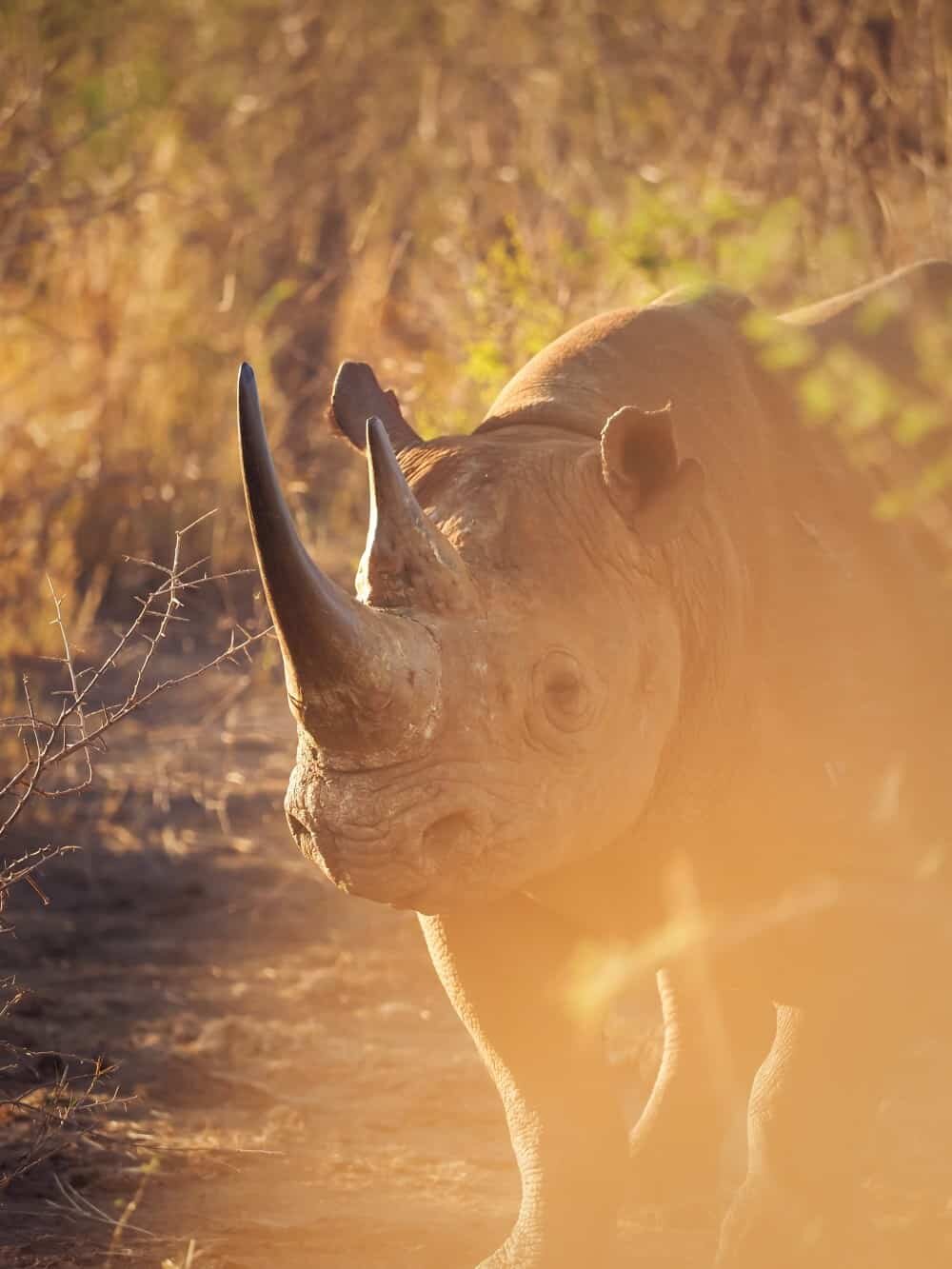
The rare Black Rhino photographed in Madikwe Reserve – ISO 320 | 1/1250sec | Olympus 40-150mm f2.8 PRO lens + OM-D E-M1X
Why are Rhinos being poached?
They’re being poached for their horns (the name rhinoceros translating to mean ‘nose horn’) which are very similar to horse hooves, turtle and cockatoo beaks and are primarily made up of keratin, the same substance that forms a humans nails and hair.
In some cultures, mainly Asian, the horn is believed to cure a number of health ailments but is considered a status symbol of wealth. The horn can be reduced to a powder and used in Chinese medicine to treat fevers however there is no evidence to prove it has any medicinal value…the fact conservationists find so frustrating.
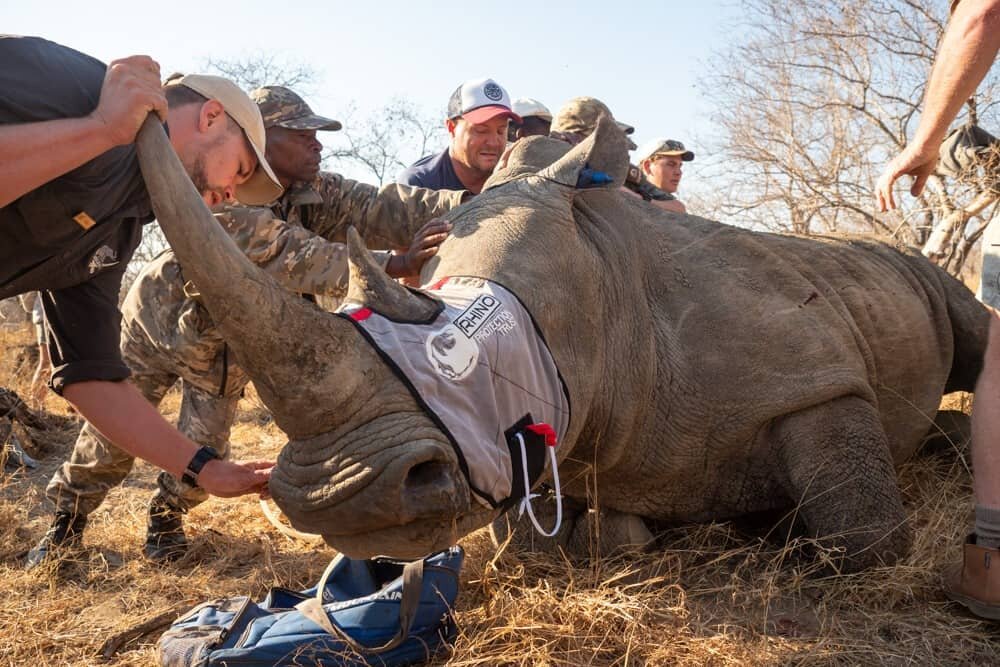
What is Rhino Notching?
The method of notching has been around for decades but due to the rapid increase in poaching, rhino notching is now a crucial and very effective way to help track and monitor each individual animal.
Once it’s been confirmed a rhino doesn’t already have tags, the animal is darted (more often than not from a helicopter) then a team of trained personnel rush into action once the animal is safely anesthetized. The entire process aims to take less than 20minutes to ensure the health of the rhino isn’t compromised.
Before the procedure begins, ear plugs and a blindfold are used to minimise any distress to the rhino during the procedure. DNA samples are then swiftly taken from the horn (which can later be used to prosecute criminals caught exporting horns), a tracking device is placed in the ear which corresponds to a numbered system (much like a domestic pet) and a hair follicle is removed from the rhino’s tail.
During the notching, the rhino is constantly assessed for any signs of distress and a doctor is present to ensure it’s lying in the correct position to avoid any breathing issues or potential implications.
Once it’s completed, the rhino will either start to move again naturally, or a reversal anesthesia can be injected to give it a helping hand. Initially it will move quite slowly but within a few minutes they’re wandering around again and will typically start to call for their calves or mates. White rhinos are quite calm animals however black rhinos tend to be more aggressive so most lodges will only allow guest participation on the former species.
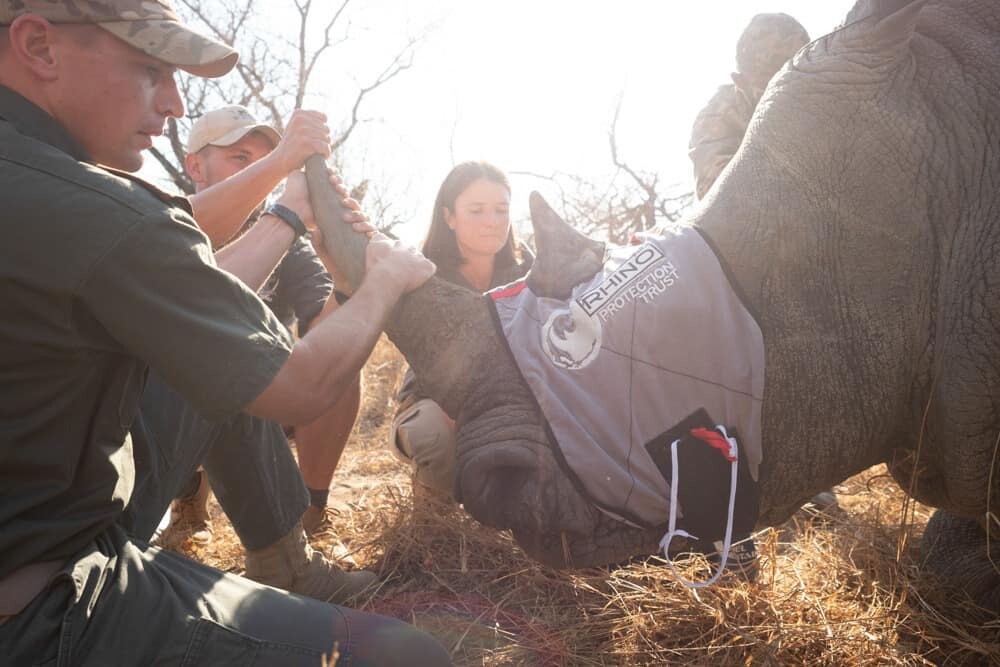
My Experience at Kapama Private Game Reserve
“As we rushed through the bush to help push the rhino into a better position, it didn’t hit me for a minute or so that my hands were actually touching this beautiful animal. Once the realisation took over I was in total awe.”
Being invited to take part in a rhino notching was not something I expected, nor did I completely comprehend the process prior to arriving in South Africa. But it turned out to be an experience I’ll be forever grateful to have witnessed.
Doctor Peter Stewart Rogers, regarded as one of the most experienced wildlife veterinarians in the world arrived at the Kapama Karula lodge to discuss how the following morning would unfold. Explaining the process, the instruments that would be used and the reasoning behind the need for notching, he gave not only a clear picture of the procedure but the dangers facing these animals.
On the morning of the notching, we left the lodge at 6am to help search for a potential candidate. Passing zebra, giraffes, wildebeest and impalas, it was just like any safari drive until our tracker noticed rhino footprints. Gazing into the shrub and trees it didn’t take us long before we saw two rhino in the distance standing with a small calf. Giving their location to the helicopter, our vehicle then left the area to let the doctor and helicopter pilot commence the darting.
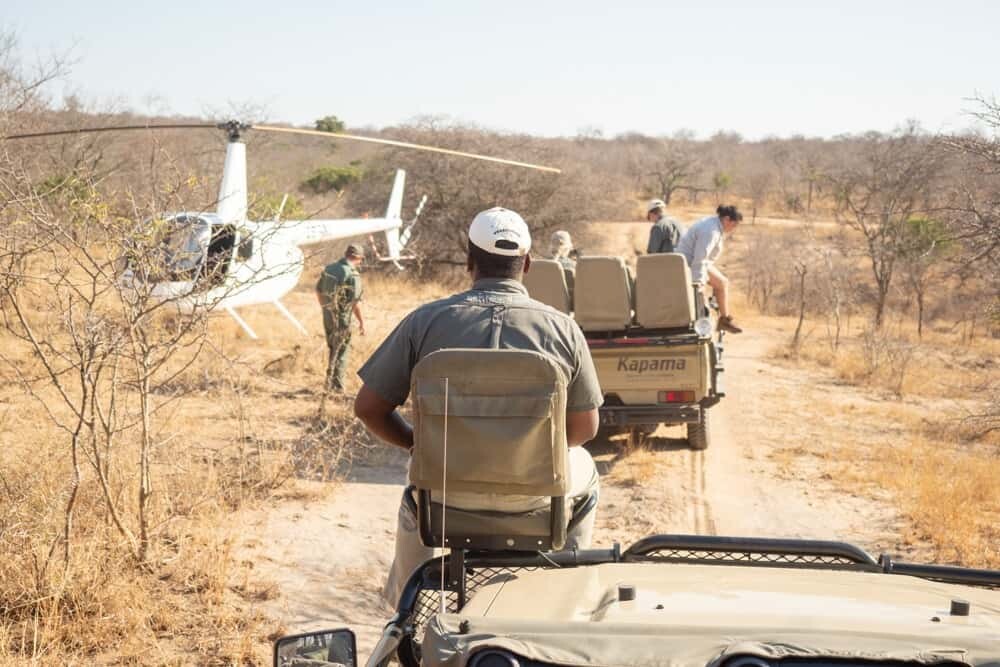
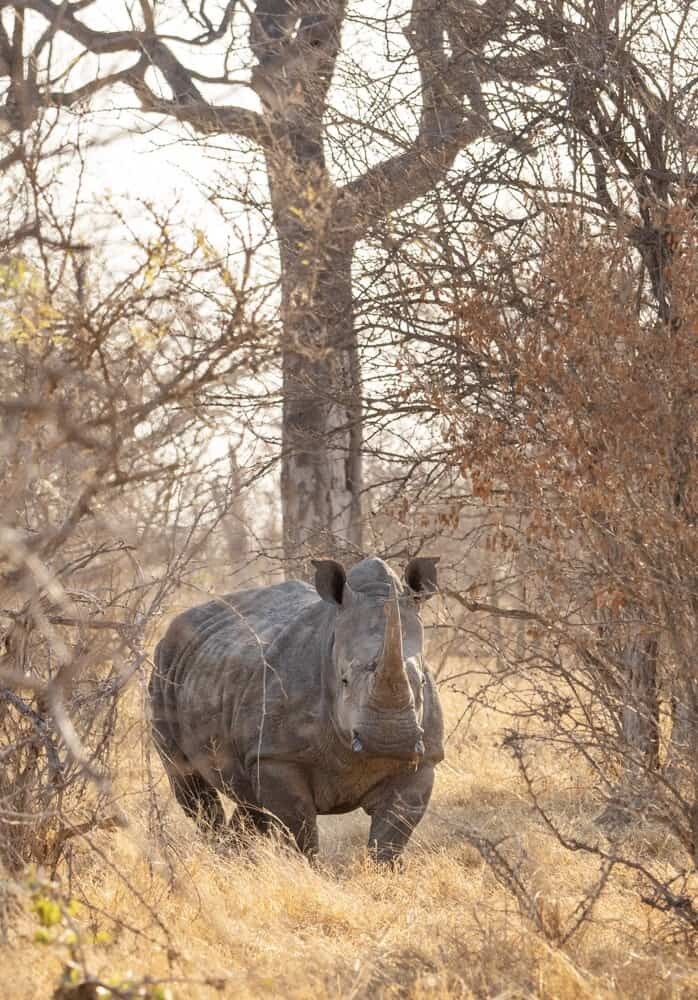
To sit and watch as the helicopter maneuvered in all directions, hovering close to the tree level to ensure a quick and effective shot was so impressive to see. The time between being darted to being immobilised was no more than 10 minutes, showcasing just how practiced and professional this team was.
After a very brief inspection, we were quickly called over to assist in pushing the rhino into a more desired position for the procedure. It was at this moment that I truly understood not only how lucky I was to be there, but how important the work these incredible people are doing. To touch a rhino and feel it’s warmth, hear it breathing and see the immense size up close was overwhelmingly special.
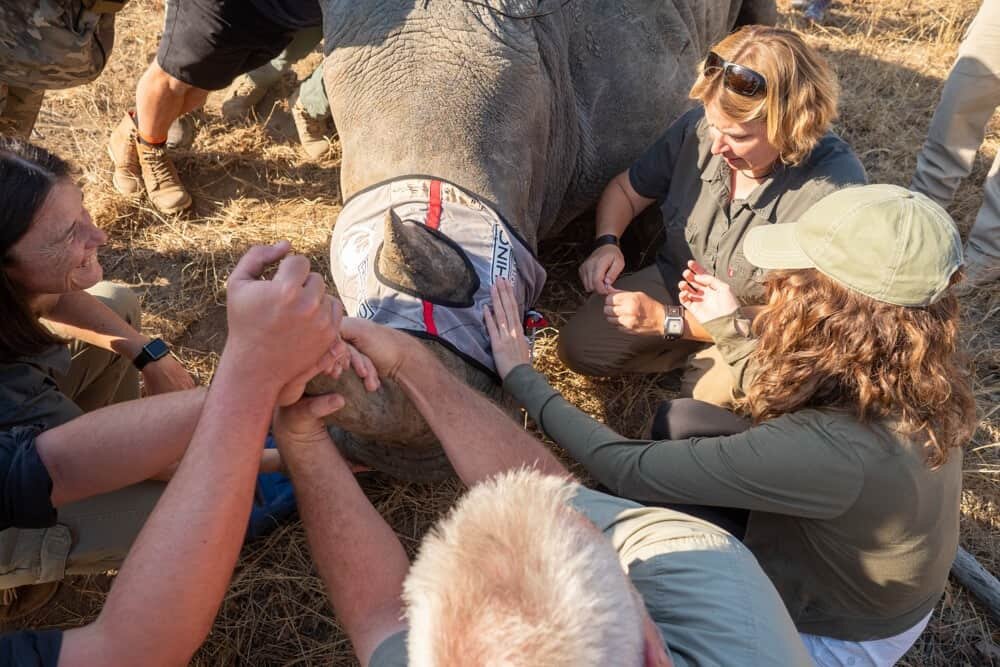
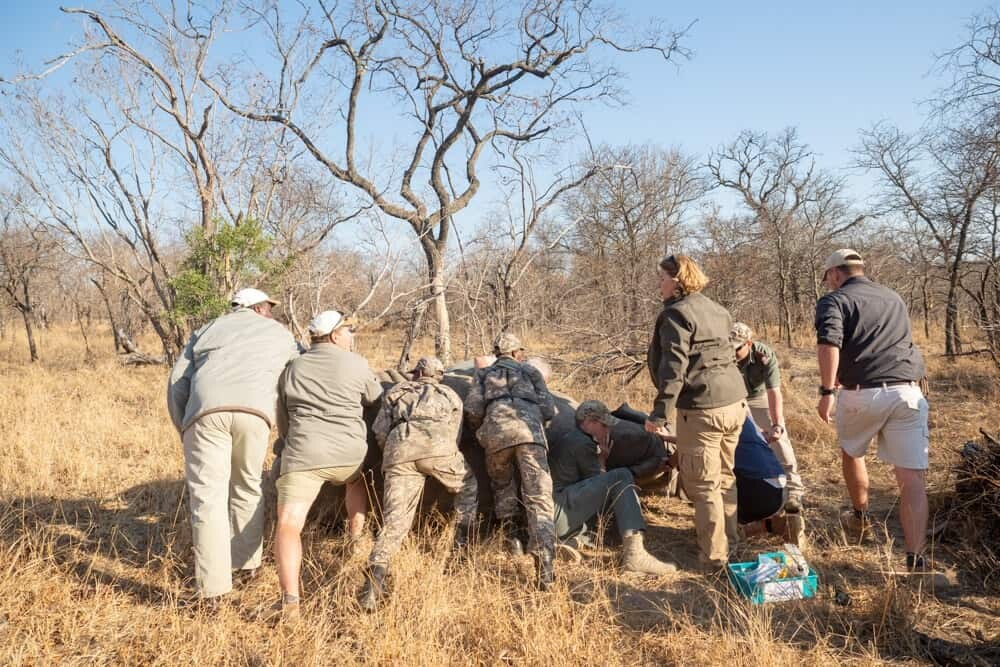
It took about 10 people to help hold the rhino in position while the samples were taken, so much strength and dedication on display with others assisting in hydrating and performing the required tagging.
As the process was completed, we walked back to the vehicle to sit and watch as she slowly woke and got her bearings again. To our surprise, she walked directly towards us before stopping to call out to the calf she’d been seen with moments before.
Seconds later, we heard the calf respond with what was one of the sweetest calls. She turned in it’s direction and went back to roaming the reserve.
For information on staying at Kapama Karula Lodge, please visit their website here.
The Hoedspruit Endangered Species Centre plays a significant role in treating and rehabilitating rhinos affected by poaching and you can donate to their efforts directly or visit in person to tour the work being done. More information is available here.
To read more about the work of Doctor Rogers, please visit his website – http://www.provetwildlife.com
Related posts – Photographing Wildlife on Safari
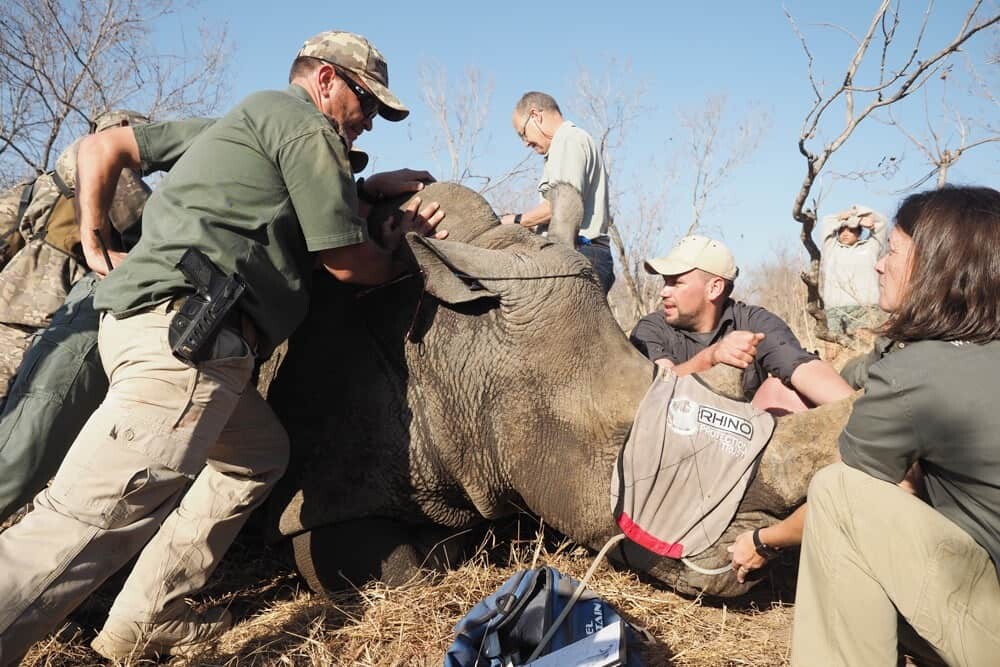
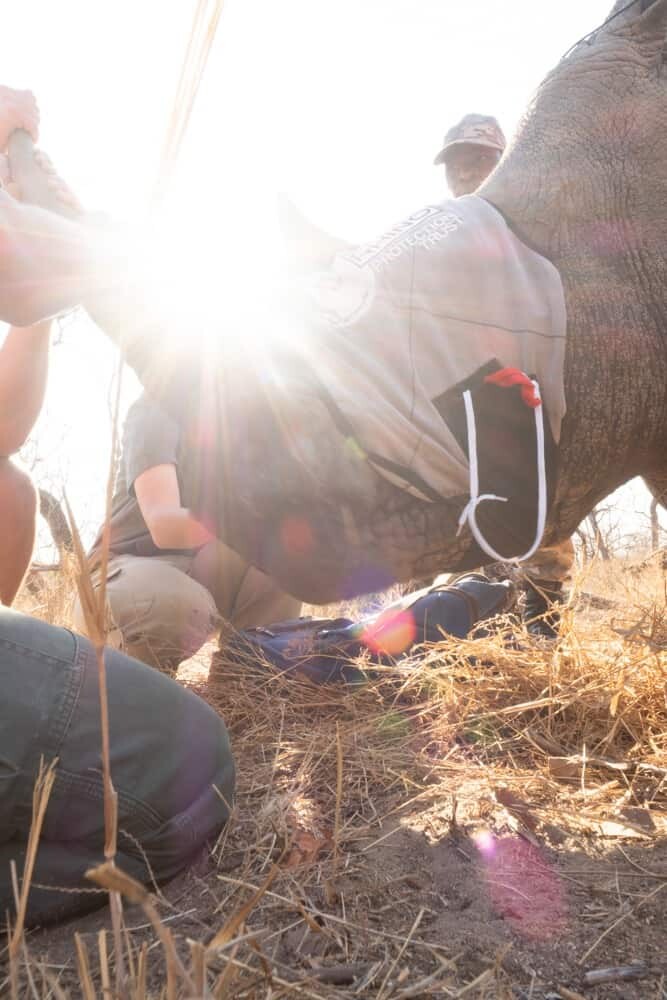
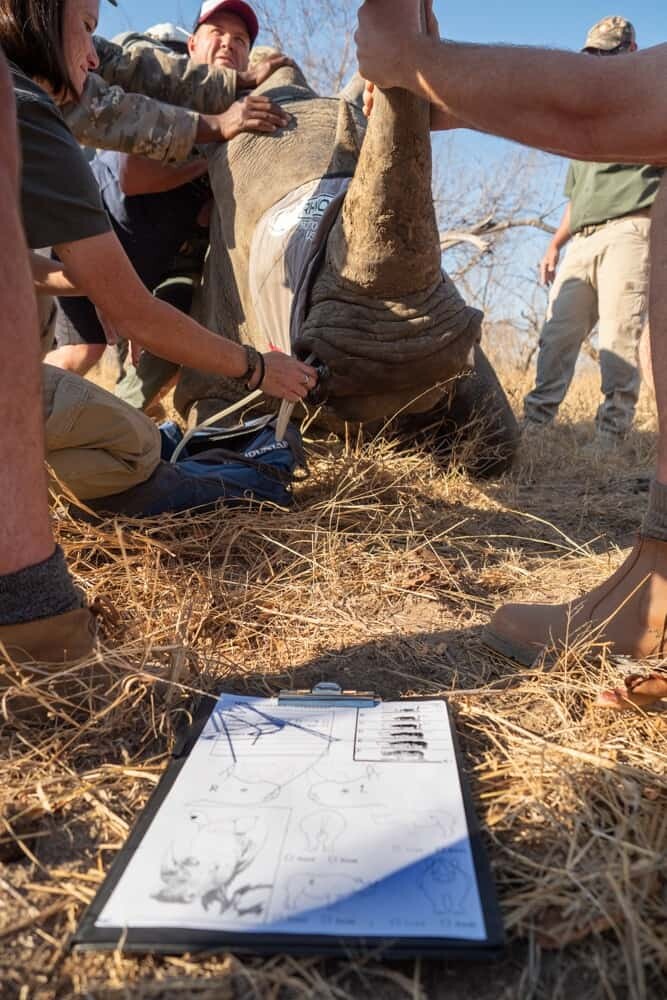
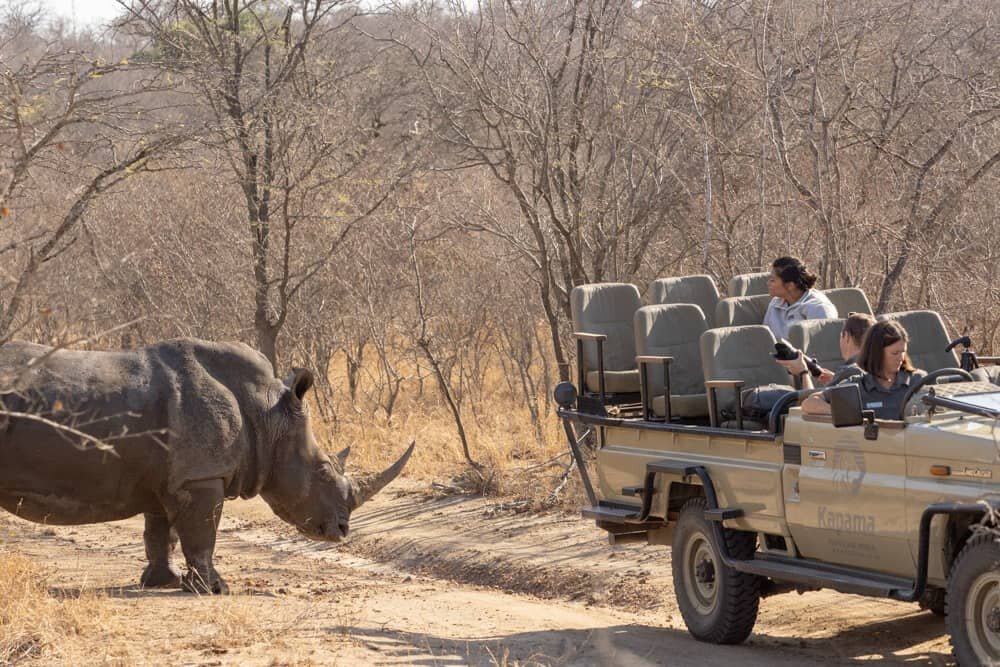
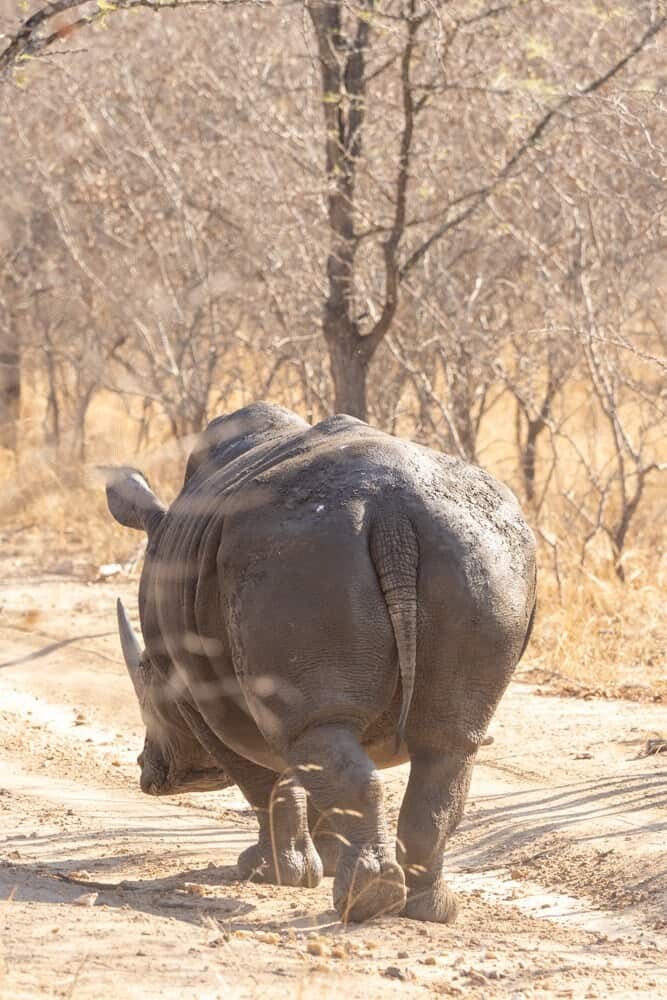
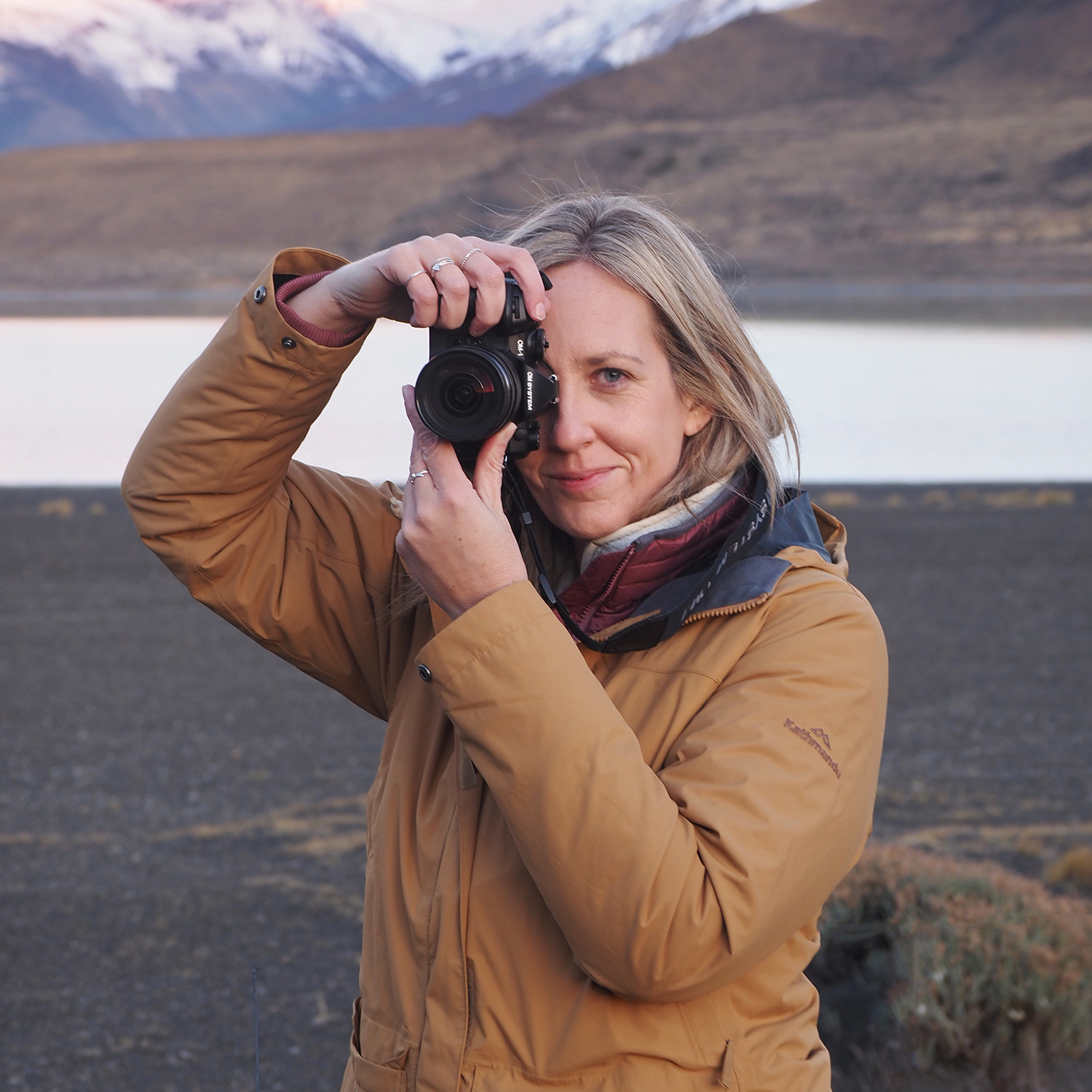
Hello! I’m the founder and photographer behind The Wandering Lens.
With 19+yrs experience as a professional travel and landscape photographer, all advice found on this site is from my personal experience, or that of contributors, on the road. I hope it’s useful for your own travels and would love to hear in the comments about your trips and experiences around the world.

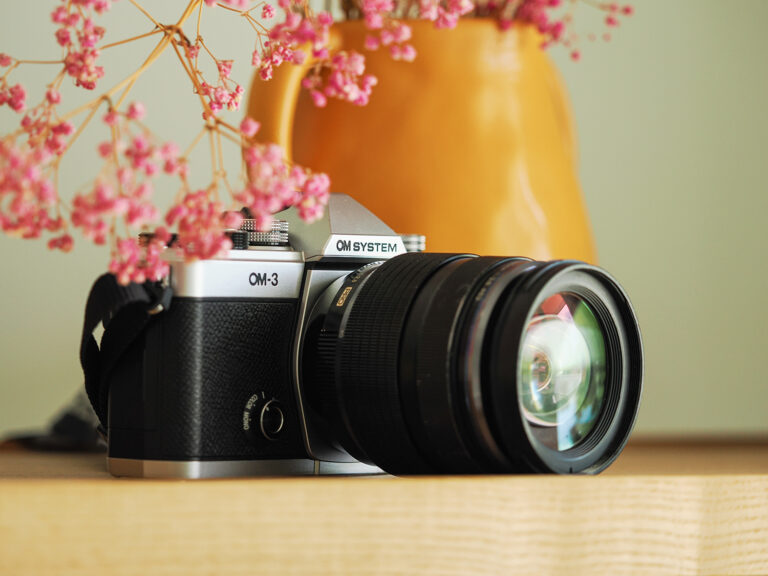
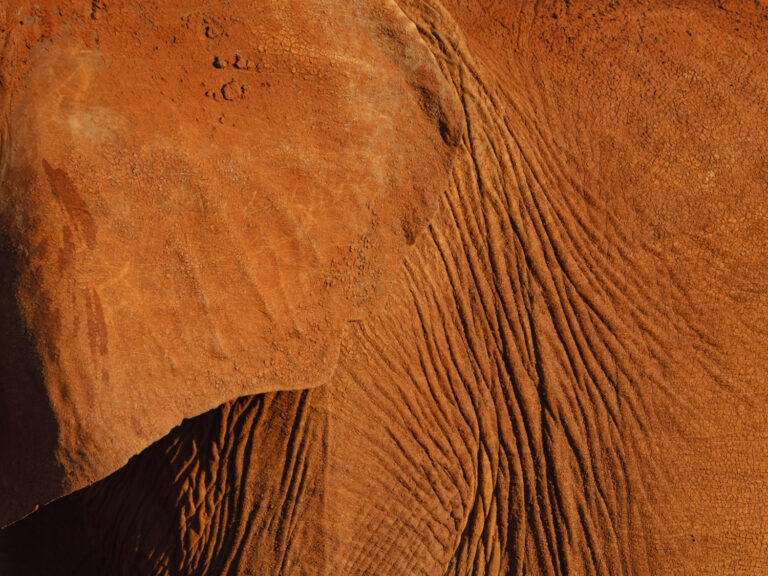
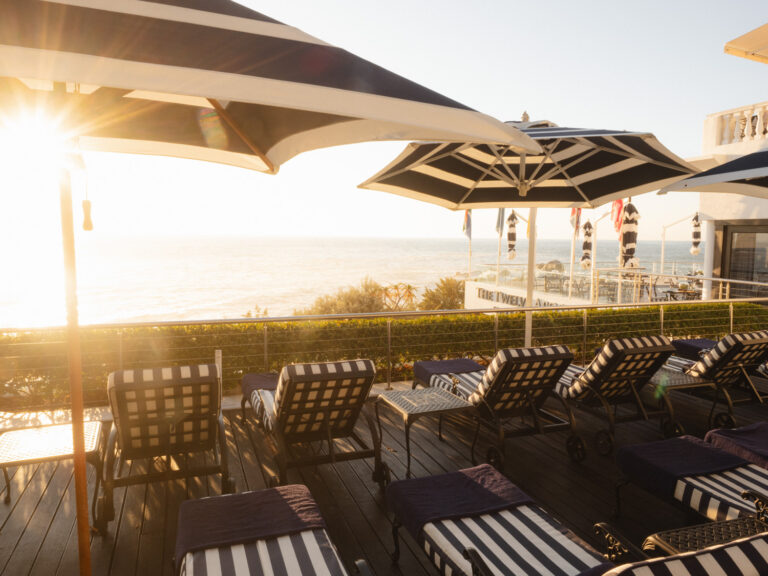
Leave a Comment